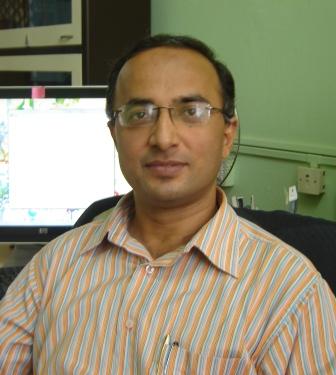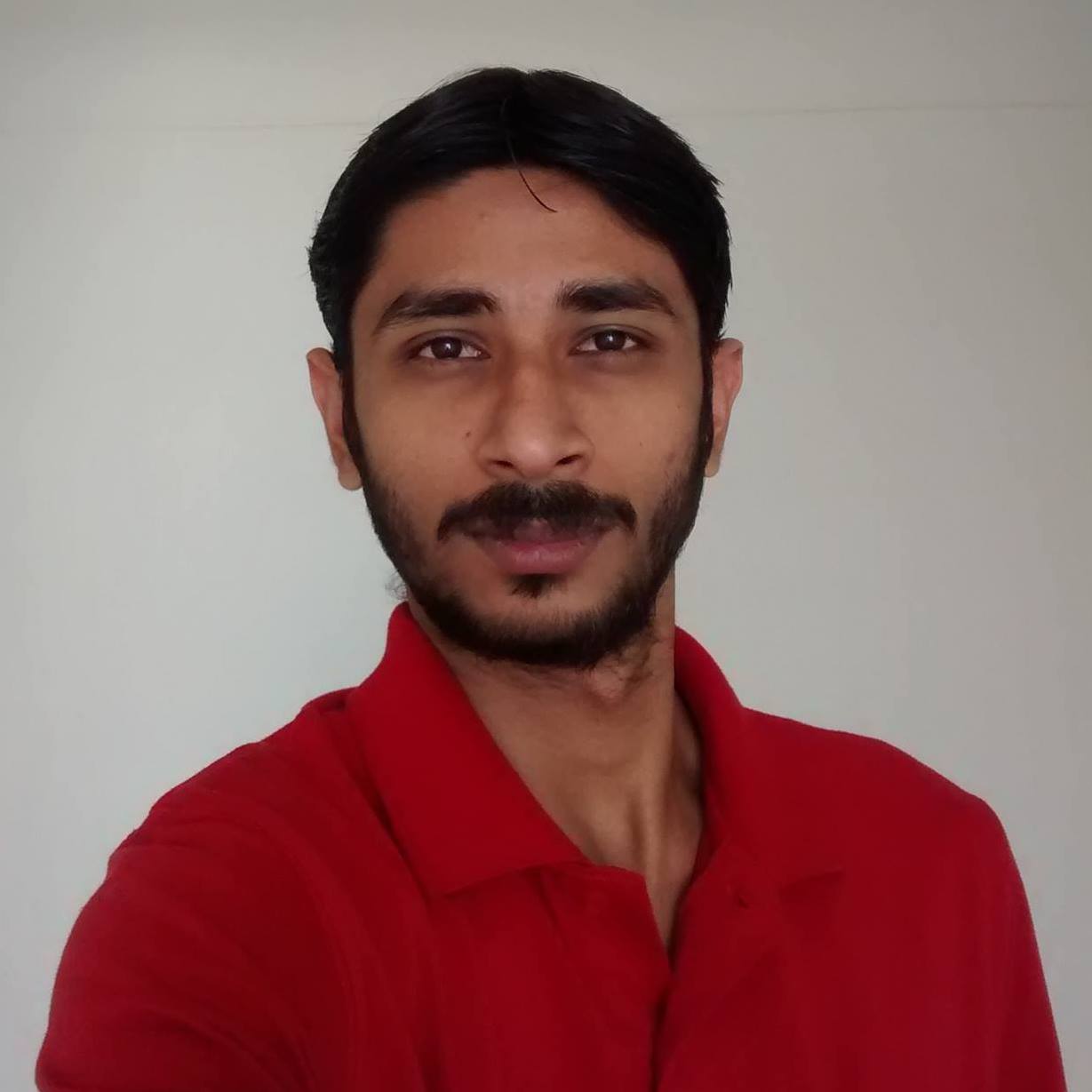Prof. Pavitra Sandilya

Prof. Pavitra Sandilya
Ph.D.(IIT Kanpur)
Assistant Professor
P. Sandilya joined the Institute in 2002
Contacts:
C1-137, IIT Campus, Kharagpur 721302
-286727 (Office) / -286728 (Residence) / -223601 (Private)
pavit @ hijli.iitkgp.ernet.in , profsandilya@gmail.com
| Name | Course | Contact Number | Project | ||
|---|---|---|---|---|---|
 |
Mr. Pritam Saha | Ph.D | 9475472856 | pritamistu@gmail.com | |
 |
Nitin Baby | Ph.D | 9496185815 | tvbnitin@gmail.com |
| Project Title | Type | PI/Consultant | Co-PI/Co-Consultant | Sponsor/Client |
|---|---|---|---|---|
| Theoretical and Experimental Studies on Cooling Liquid Nitrogen by Helium Injection | Sponsored Project | Dr. Pavitra Sandilya | ISRO(On-going) |
-
Cryogenic liquids have low boiling points and surface tension. These cause substantial evaporation of these liquids Storage of cryogenic liquids requires reduction or elimination of boiloff losses. Various methods to prevent boiloff of cryogenic liquids have been proposed, like use of multilayer insulation, cryocooler and radiation shields etc., depending on the system and duration of storage. One of the ways for short term storage is by evaporative cooling. This is generally done by bubbling a suitable gas through the liquid. Evaporation of liquid into the gas bubbles causes removal of latent heat of vaporization thereby resulting in subcooling of the liquid. This phenomenon is dictated by bubble flow behaviour and design of the gas sparger and storage tank. All these effects are under study through experimentations and CFD-based modeling and simulation.
-
Catalysts used in various chemical reactors should have high porosity and surface area for efficient contacting of the reactants. Choice of catalyst, among various other factors, contributes to the produc cost.Coprecipitation is one efficient method for preparing (supported) catalysts. Usually this method is carried out at room or higher temperature; this has been found to cause non-homogeneity and anisotropy in the catalysts. Use of low temperature during coprecipitation has been shown to increase homogeneity as well as pore volume and surface area. Research is being carried out to develop efficient catalysts for various chemical processes by applying low temperature.
-
Anthropogenic carbon dioxide causes environmental degradation, while carbon dioxidepresent in the sour natural gas needs to be removed before downstream processing of natural gas. Various methods have been proposed to capture and sequester carbon dioxide. These methods are broadly classified as non-cryogenic and cryogenic. The former group which includes chemical absorption, adsorption and membrane separations, is more popular and developed. Cryogenic methods, earlier regarded as uneconomical, are finding renewed attention for carbon capture from steams having high CO2partial pressure.There are various methods proposed under this category. Research is carried out to explore these methods.
-
Cryogenic liquids like liquid oxygen, liquid hydrogen, liquefied natural gas etc. are often stored for long duration and transferred over long distances. In such cases, the storage vessels are acted upon by dynamic stresses which are not present in the ground storage vessels. Design of storage vessels on mobile platforms need analysis of both static and dynamic stresses. In addition, suitable insulations are also needed. To meet these demands, research on design and development of onboard cryogenic storage vessels is underway. Both thermal and structural analyses for various insulations and supports are done for this purpose.
-
Gas hydrates are ice-like substances formed at thermodynamically dictated (high) pressure and (low) temperature. Their study is important for primarily three reasons: (i) Gas hydrates contain large amount of methane which, if exploited, can meet the global energy demand for many decades in future; (ii) Many gases like natural gas, carbon dioxide, hydrogen can be stored and/or sequestered in hydrate form; and (iii) Stability of sea bed is affected by presence of gas hydrates, which act as cementing agent. Studies on carbon dioxide hydrate for carbon capture is being carried on.
-
1. Process Intensification Laboratory
-
| Subject Code | Subject Name |
|---|---|
| CR30002 | CRYOGENIC SEPERATION PROCESSES |
| CR60011 | CRYOFUEL SYSTEMS |
| CR60007 | CRYOGENIC MASS TRANSFER AND SEPARATION SYSTEMS |
| CR69003 | CRYO SYSTEMS LABORATORY |
-
P.T. Rao, P. Sandilya, D.P. Rao and A. Sharma, "Analysis of Flow of Gas-phase in a High Gravity Contactor", Indian Chemical Engineering Congress (CHEMCON 1993), IIT, Bombay, India, Dec 15-18, 1993.
-
P. Sandilya, G. Biswas and A. Sharma, "Effect of cocurrent and countercurrent Flow of a Gas and a Liquid between Two Rotating Disks on Gas-phase Controlled Absorption", ICACHE-96, IIT, Madras, India, Dec 11-13, 1996.
-
P. Sandilya, G. Biswas and A. Sharma, "Gas-phase Controlled Absorption for Countercurrently Flowing Gas and Liquid between Rotating Disks", 14th National Heat and Mass Transfer Conference, IIT, Kanpur, India, Dec 29-31, 1997.
-
P. Sandilya, R. Mukherjee, D. Deb, and D.P. Rao, "Experimental Studies on Gas-side Mass Transfer in a Higee Contactor", Indian Chemical Engineering Congress (CHEMCON 1998), Andhra University, Vishakhapatnam, India, Dec 16-19, 1998.
-
R. Mukherjee, D. Deb, P. Sandilya and D.P. Rao, "Gas-phase Mass Transfer in a Centrifugal Gas-Liquid Contactor with a Stack of Flexible Disks as Packing", Centrifugal Materials Processing IV, The Fourth International Workshop on Materials Processing at High Gravity, May 19-June 2, 2000, Clarkson University Potsdam, New York, USA, 2000.
-
R. Mukherjee, D. Deb, P. Sandilya and D.P. Rao, "Gas-Phase Mass Transfer in a Centrifugal Gas-Lqiuid Contactor with a Stack of Flexible Disks as Packing", Processing by Centrifugation, pp. 51-60, 2001.
-
P. Sandilya, D.P. Rao, A. Sharma and G. Biswas, "Gas-Phase Mass Transfer in a Centrifugal Contactor", Industrial & Engineering Chemistry Research, vol. 40, pp. 384, 2001.
-
P. Sandilya, G. Biswas, D.P. Rao and A. Sharma, "Numerical Simulation of the Gas Flow and Mass Transfer Between two Coaxially Rotating Disks", Numerical Heat Transfer (A), vol. 39, pp. 285, 2001.
-
A Majumder, D. Maiti, P. Sandilya and S. S. Bandyopadhyay, "CFD Analysis of a Ranque-Hilsch Tube", Fluent CFD Conference, 2003 for Indian & South Asia, November 18 - 20, 2003, Pune, India, 2003.
-
N. Gangwar and P. Sandilya, "Conceptual Design of Rotating Packed Bed for Air Separation", Indian Chemical Engineering Congress (CHEMCON - 2003), December 19 - 22, 2003, Bhubaneswar, India, 2003.
-
R. Amrit and P. Sandilya, "Numerical Simulation of Depressurization in a Gas-hydrate Bed", Indian Chemical Engineering Congress (CHEMCON - 2005), December 14 - 17, New Delhi, India, 2005.
-
Tanmay Dutta, Sumana Ghosh, P. Sandilya and S. S. Bandyopadhyay, "CFD Analysis of a Cryogenic Ranque Hilsch Tube Air Separator", FLUENT Users Group Meeting 2006, 20 - 22 November 2006, Pune, India, 2006.
-
Sumana Ghosh, Tanmay Dutta, P. Sandilya and S. S. Bandyopadhyay, "CFD Analysis of a Cryogenic Vortex Tube Air Separator", Indian Chemical Engineering Congress (CHEMCON - 2006), Bharauch, December 27 - 30, 2006.
-
Suryateja G, S Pujari, P. Sandilya, & S Ganguly, "A reduced order thermo-chemical model of blast furnace for real time simulation", Computers and Chemical Engineering, 2007.
-
Yadav Ramawadh and P. Sandilya, "Gases for Cryo-treatment", Gas News, vol. 31, no.. 6, 2007.
-
T Dutta, P. Sandilya, and S S Bandyopadhyay, "CFD Analysis of the Flow Phenomena in a Cryogenic Vortex Tube", Indian Chemical Engineering Congress (CHEMCON 2007), Kolkata, December 27-30, 2007.
-
Yadav Ramawadh, Mandar Mone, and P. Sandilya, "Modeling of Heat Transfer in Tissues during Cryosurgery", Indian Chemical Engineering Congress (CHEMCON 2007), December 27-30, Heritage Institute of Technology, Kolkata, India, 2007.
-
Himanshu Mittal and P. Sandilya, "Conceptual Design of a System for the Formation of Carbon Dioxide Hydrate", Indian Chemical Engineering Congress (CHEMCON 2007), December 27 - 30, Heritage Institute of Technology, Kolkata, India, 2007.
-
Tanmay Dutta, P. Sandilya and S. S. Bandyopadhyay, "CFD Analysis of Energy and Phase Separation in a Cryogenic Vortex Tube", International Conference on High Speed Transatmospheric Air and Space Transportation, Hyderabad, 29 - 30 June, 2007.
-
L D N V V Konda, and P. Sandilya, "Recovery of Natural Gas from Natural Gas Hydrates using Carbon Dioxide", CHEMCON 2008, Chandigarh, India, 2008.
-
P T Jagdeep and P. Sandilya, "Design of a Laboratory Scale Setup to store Hydrogen as Hydrogen Hydrates", CHEMCON 2008, Chandigarh, India, 2008.
-
T. Dutta, P. Sandilya and S S Bandyopadhyay, "CFD Analysis of Energy Separation in a Cryogenic Vortex Tube", Conferences on Advances in Space Science and Technology, January 14-16, 2008, IIT Kharagpur, India, 2008.
-
Subhasis Mandal & P. Sandilya, "Natural Gas Production From Submarine Natural Gas hydrate by Thermal Simulation", CHEMCON 2011, December 27-29, 2010, Annamalai Nagar, India, 2010.
-
P. Sandilya and Saibal Ganguly, "Carbon dioxide sequestration by hydrate formation during underwater energy generation", 7th International Conference on Gas Hydrate, Edinburgh, July 17-21,, 2011.
-
P. Sandiya and Saibal Ganguly, "Conceptual design of an experimental facility for extracting natural gas from natural gas hydrate", 7th International Conference on Gas Hydrate, Edinburgh, July 17-21, 2011.
-
P. Sandilya and Subhasis Mandal, "Numerical studies on production of natural gas from natural gas hydrate in a deformable sediment bed", 7th International Conference on Gas Hydrate, Edinburgh, July 17-21,, 2011.
-
P. Sandilya and Shubhangi Gupta, "Numerical studies on production of natural gas from natural gas hydrate in a deformable sediment bed", CHEMCON 2011, December 27-29, 2011, Bangalore, India, 2011.
-
P. Sandilya, "Rajan Kumar, Ramendra Kumar Sahu, Simulation studies on natural gas production from natural gas hydrate by thermal stimulation", Indian Chemical Engineering Congress, CHMCON 2012, December 27-30, Jalandhar, 2012.
-
P. Sandilya, "Rajan Kumar, Ramendra Kumar Sahu, Process intensification of air separation using centrifugal field", 24th National Symposium on Cryogenics (NSC-24), January 21-24, 2013, Ahmedabad, 2013.
-
P. Sandilya, P. Saha, S. Sengupta, "Simulation studies on cooling of cryogenic propellant by gas bubbling", International Cryogenic Engineering Conference and the International Cryogenic Materials Conference 2014, July 7-11, 2014, university of Twente, Enschede, The Netherlands, 2014.
-
P. Sandilya, "Lessons from simulation studies on natural gas extraction by thermal stimulation of sutomarine natural gas hydrate", International Methane Hydrate Research & Development, Hyderabad, November 9-12,, 2014.
-
Mohan Reddy, P. Sandilya, S. Sengupta, "Cryochemical technique for catalyst development", 25th National Symposium on Cryogenics, December 8-10, 2014.
-
P. Saha, P. Sandilya, "Development of a simulation method for injection cooling", 25th National Symposium on Cryogenics, December 8-10, 2014.
-
P. Sandilya, M. Jaipal, K. Nagendra, "A. Atta study of a dynamically operated bed for cryogenic carbon capture from natural gas", 25th National Symposium on Cryogenics, December 8-10, 2014.
-
P. Sandilya, P. Saha, S. Sengupta, "Simulation studies on cooling of cryogenic propellant by gas bubbling", Physics Procedia, vol. 67, pp. 386-391, 2015.
-
P. Saha, P. Sandilya, "CFD Analysis of injection cooling", CHECON 2015, IIT Guwahati, December 27-30, 2015.
-
G. Mohan Reddy, S. Sengupta, P. Sandilya, "Cryochemical development of desulfurization catalyst", International Cryogenic Engineering Conference and the International Cryogenic Materials Conference 2016, New Delhi, March 7-11, 2016.
-
P. Saha, P. Sandilya, "One-dimensional CFD analysis of subcooling of a cryogenic liquid by gas bubbling", International Cryogenic Engineering Conference and the International Cryogenic Materials Conference 2016, New Delhi, March 7-11, 2016.
